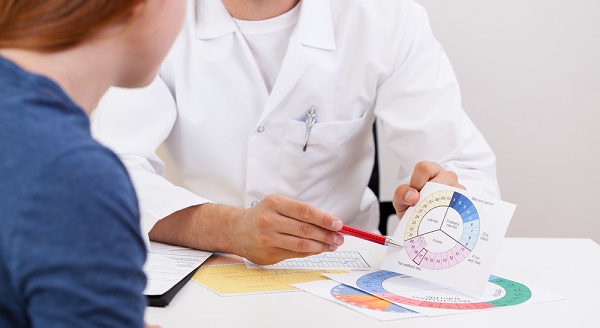
Why is ovulation so important?
Ovulation is when a mature egg is released from the ovary, pushed down the fallopian tube and is available to be fertilised. Approximately every month, an egg will mature within one of your ovaries.
Ovulation does not occur at the same time for every woman. When you ovulate depends mostly on the length of your cycle, but other factors can come into play too - stress, nutrient deficiencies, etc. That is why it is so important to learn the signs of ovulation.
So, when you are trying to conceive, you must have sex during the days leading up to and including ovulation (your fertile window) - obvious enough. In a survey conducted by ovulationcalculator.com, only 31% of women actually knew when they were ovulating....
An average menstrual cycle lasts 28 to 29 days. That's counting from the first day of your period to the day before the next. Some women have much shorter cycles, lasting only 22 days, and some have much longer ones, lasting up to 36 days. A shorter or longer cycle than the 'ideal' 28 days does not necessarily mean your cycle is 'off'; it is just key to make sure that you are ovulating and understanding when your fertile time is.
Most women ovulate anywhere between Day 11 – Day 21 of their cycle, counting from the first day of the last menstrual period. This is what many refer to as the “fertile time” of a woman’s cycle, because sexual intercourse during this time increases the chance of pregnancy. Your hormonal cycle will dictate when you ovulate. As you can see, depending on your cycle, sticking with the classic ovulation days of 13 - 15 may not be when you are ovulating.
The signs of ovulation vary from woman to woman. It is possible that some women will not even experience ovulation symptoms. In addition, the time of ovulation differs for every woman. Some women ovulate like clockwork, on the same day of their cycle every month; and other women may ovulate on varying days each month.
Narrowing down the window of time when ovulation may occur is the first step to identifying and tracking your ovulation symptoms. Your next step is to pay attention to signs that may indicate that you are ovulating.

Common signs that occur in most women
Again, it is important to note that ovulation symptoms vary from woman to woman, with some women experiencing no symptoms at all.
Change in cervical fluid
Cervical fluid that resembles 'egg whites' is a sign that you are near ovulation or are ovulating. Every woman can experience her own type of cervical fluid, and not all cervical fluid looks the same. Ovulation usually takes place on the day a woman has the most amount of wet fluid.
Change in basal body temperature
For most women, you will see that prior to ovulation, the basal body temperature is rather consistent. As you get closer to ovulation, you may have a slight decline, but it will be followed by a sharp increase after ovulation. The increase in temperature is the sign that ovulation has just occurred. Tracking your basal body temperature accurately over a few months can help you predict when ovulation is going to occur.
Change in cervical position or firmness
The cervix goes through many changes as a woman ovulates. During ovulation, the cervix will be soft, high, open and wet. For most women, it will take some time to be able to differentiate between what their cervix normally feels like and the changes it goes through during ovulation.
These three main signs of ovulation can be studied and tracked so that you can accurately predict when you ovulate. It should be noted that there are apps, websites, calendars and devices that can help you predict when you are ovulating.








